Ric Werme
New Member
There's a curious image and brief video at http://spaceweathergallery.com/indiv_upload.php?upload_id=130105 showing an arc of something above the wing of a commercial flight. No flight details were reported.
Source: https://www.youtube.com/watch?v=j4JHVEig2Tw
Video description translated:
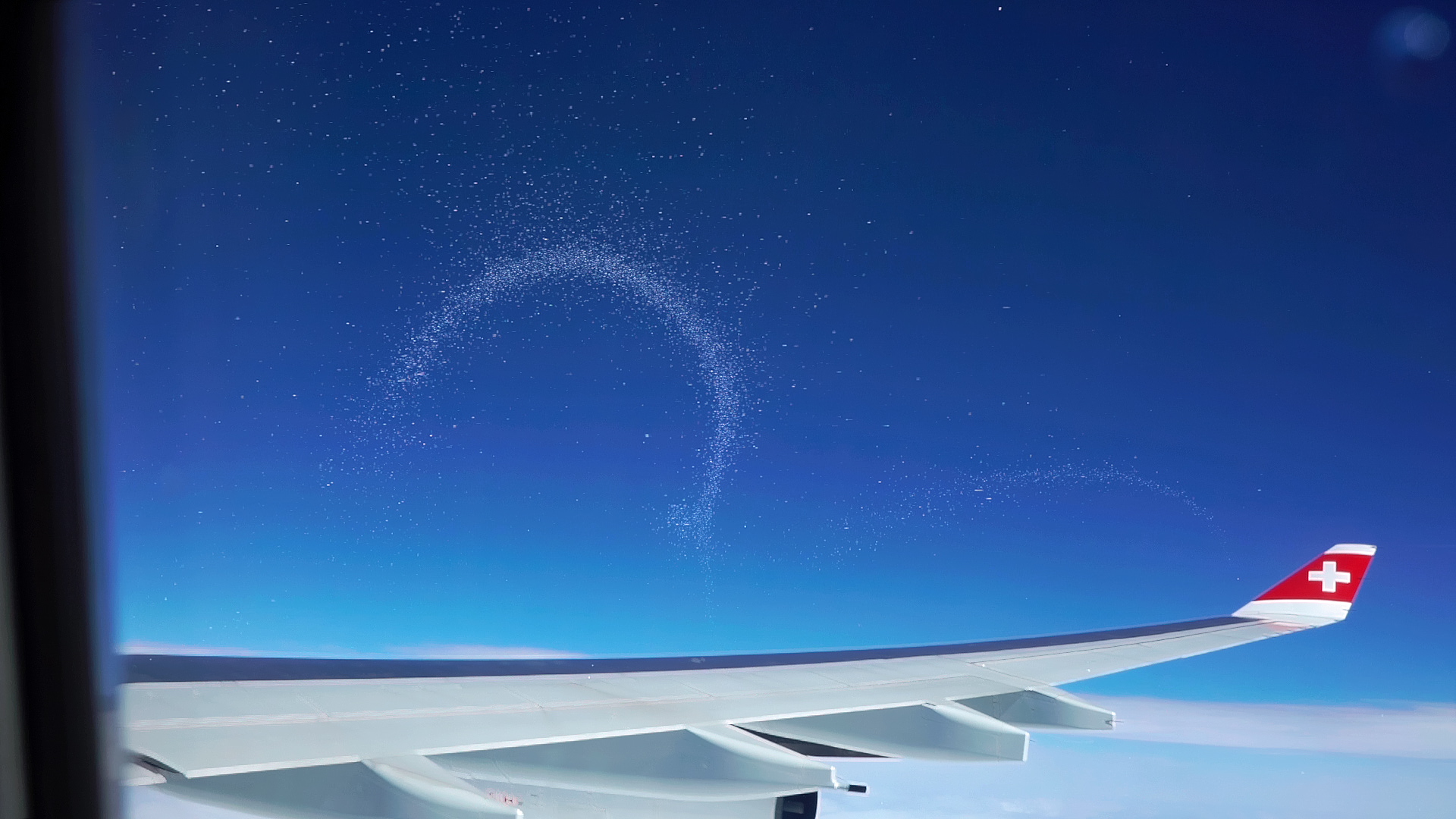
I suggested elsewhere that the something are ice crystals, probably plates reflecting sunlight. The orientation may be due to vortexes, turbulence, or something else.
Have people here seen this phenomenon?
The video is important, the image is a composite of the whole video and is very different. Think time lapse photo.
[Mod: added frame grab from video, below]

Taken by Shiraishi on October 10, 2016 @ Over Japan Sea
Details:
Something like diamond dusts glitter on plane.
I saw some glittering particles on a wing of my airplane.
They aligns along an arc.
I composited the frames from a movie, and I found 2 arcs on the wing.
I do not know whether there are actually 2 arcs of ice crystals or one can see 2 arcs due to the relationship among me and the crystals and the Sun.
Sony ILCE-7S digital camera; ISO 250, F10, 1/1000s exposure, f=30mm
A composite of 132 frame from a 4.4s movie.
Source: https://www.youtube.com/watch?v=j4JHVEig2Tw
Video description translated:
There was something glittering on the airplane wing.
Things such as diamond dust, have been sparkling along the arc-shaped. Arc-shaped Nanoha, what are lined up that way, I do not know whether this is so in relation to the sunlight.
Thumbnail is a stack of 132 sheets of the frame of this video.

I suggested elsewhere that the something are ice crystals, probably plates reflecting sunlight. The orientation may be due to vortexes, turbulence, or something else.
Have people here seen this phenomenon?
The video is important, the image is a composite of the whole video and is very different. Think time lapse photo.
[Mod: added frame grab from video, below]
Last edited by a moderator:


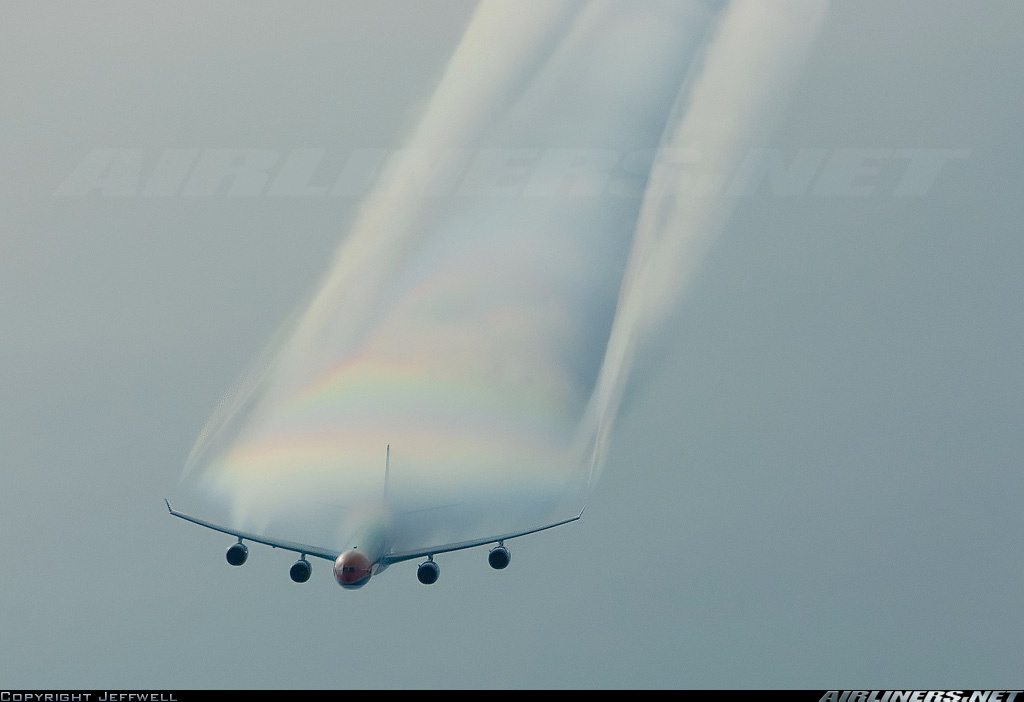
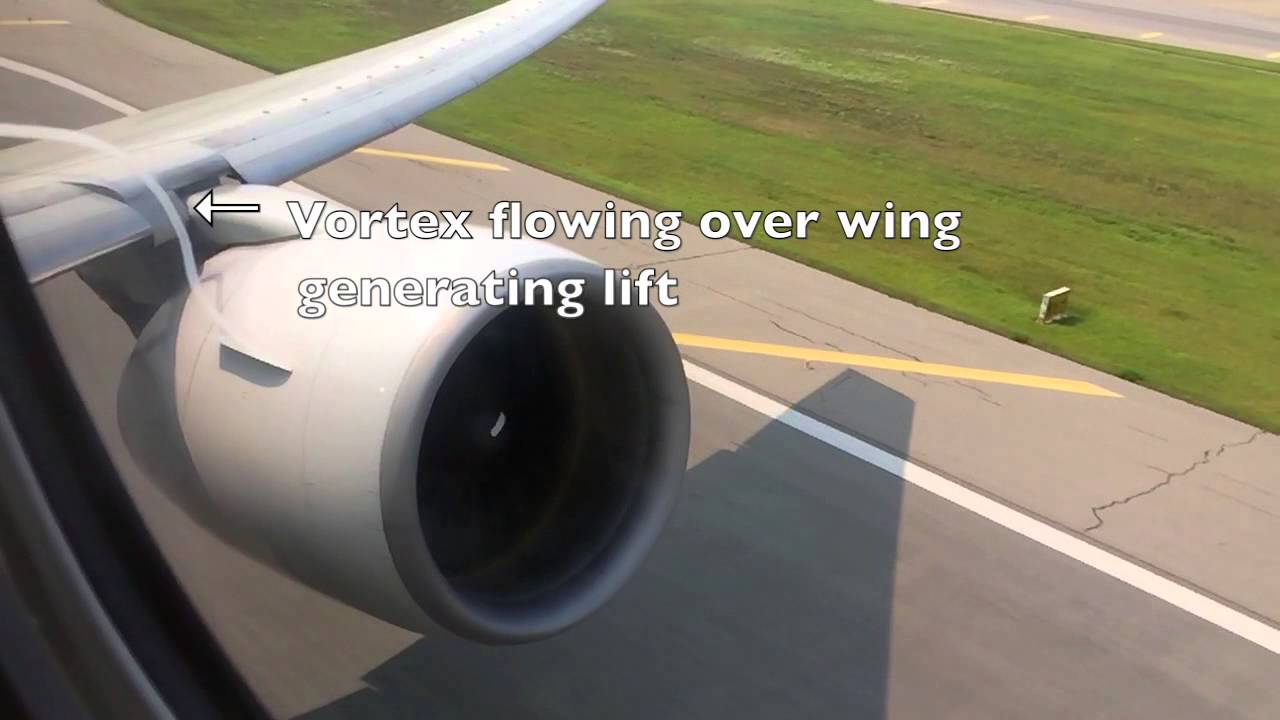
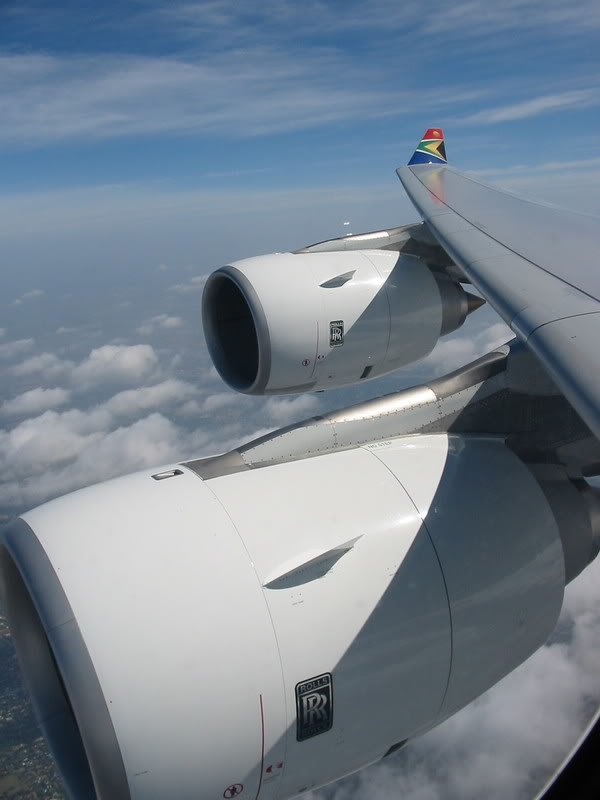
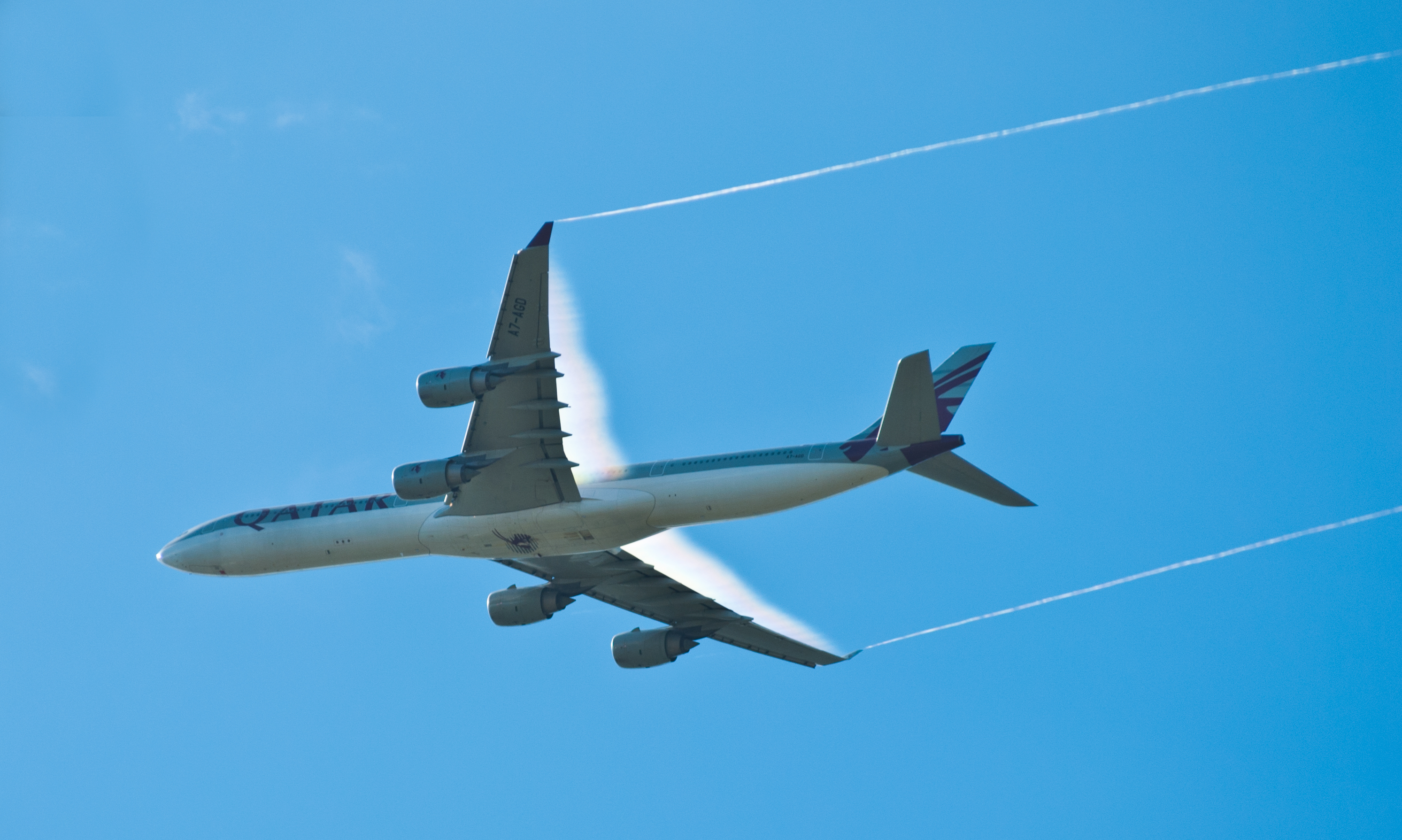 Airbus A340 Contrail
Airbus A340 Contrail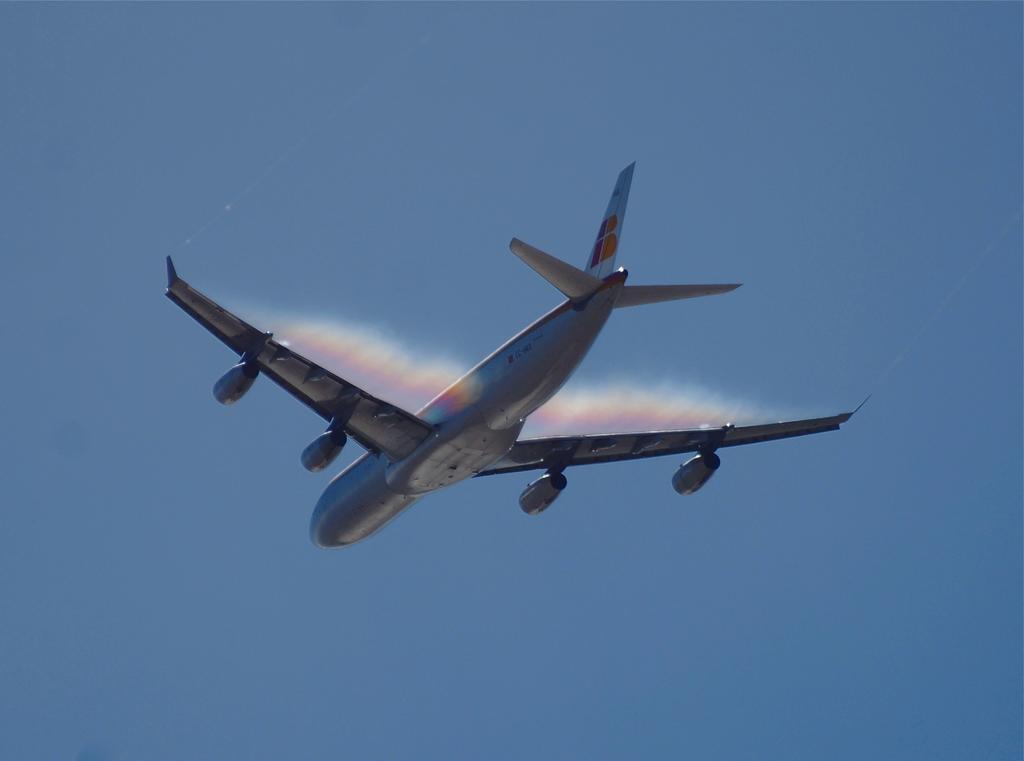 Iberia A340-300, Winged Iridescence
Iberia A340-300, Winged Iridescence